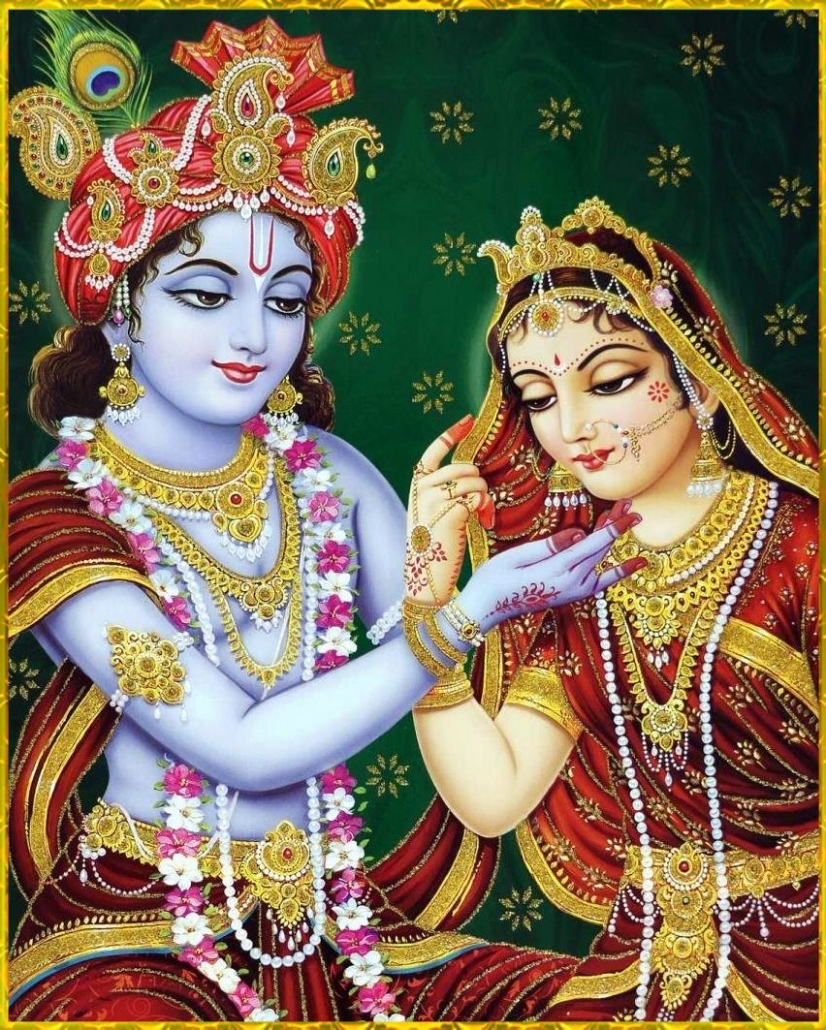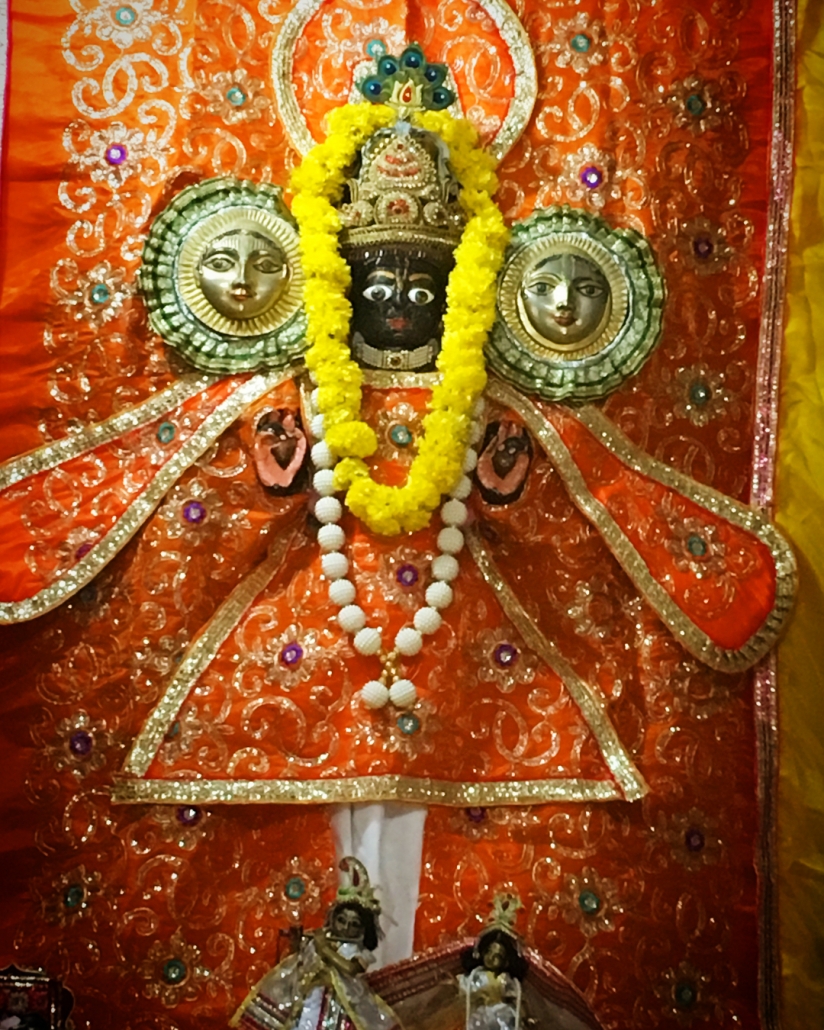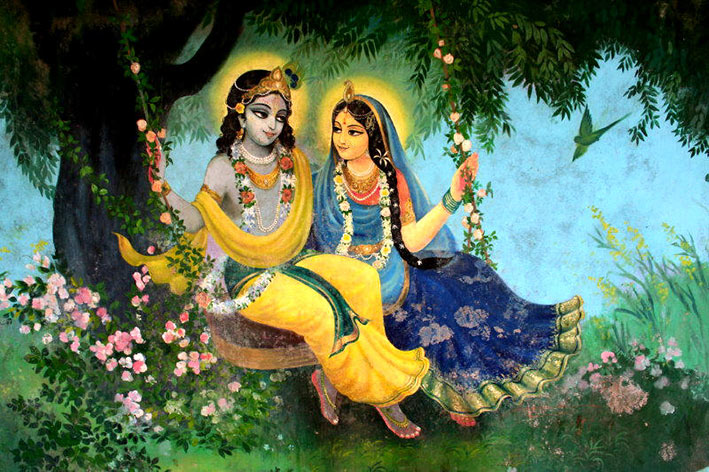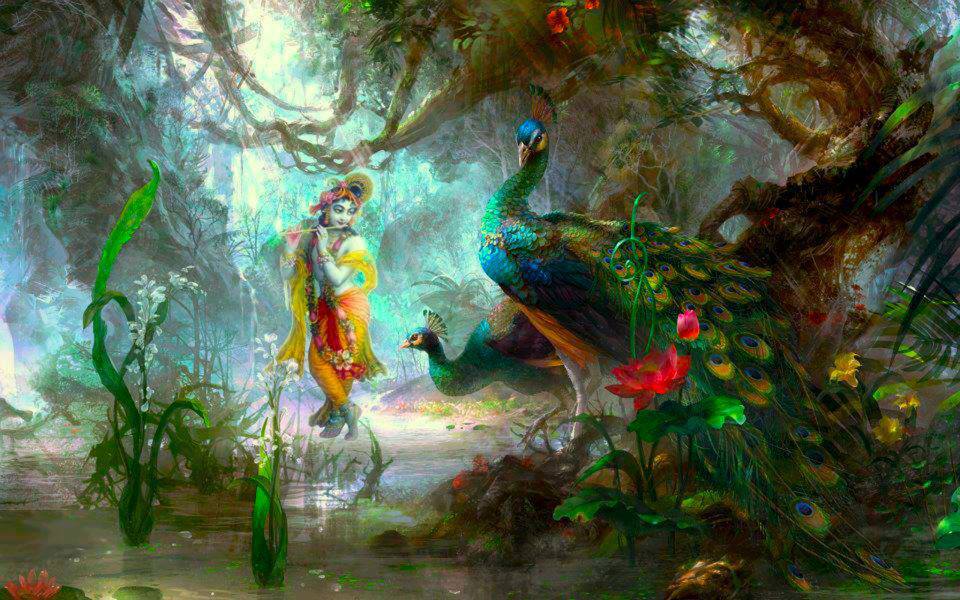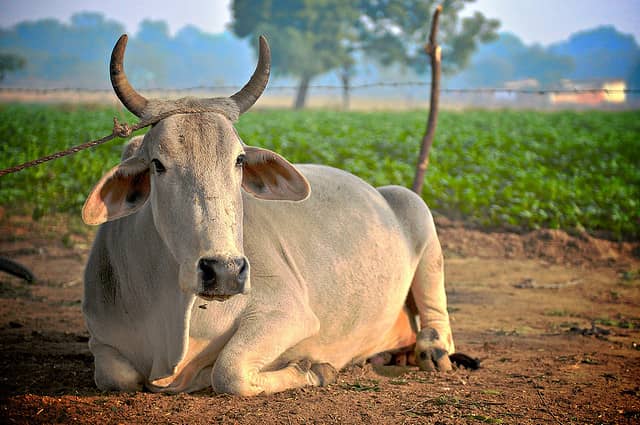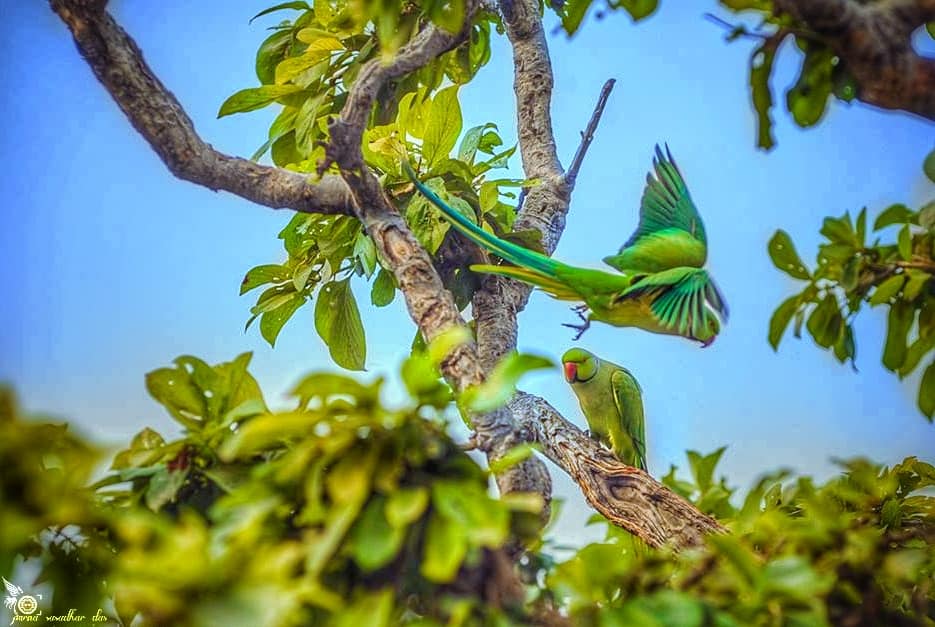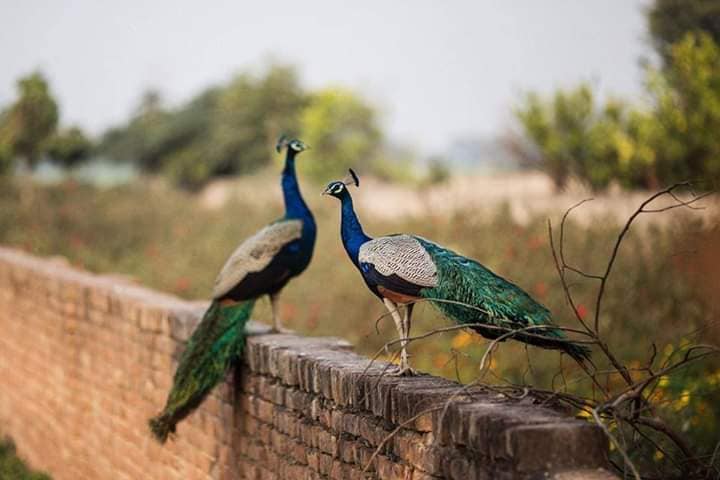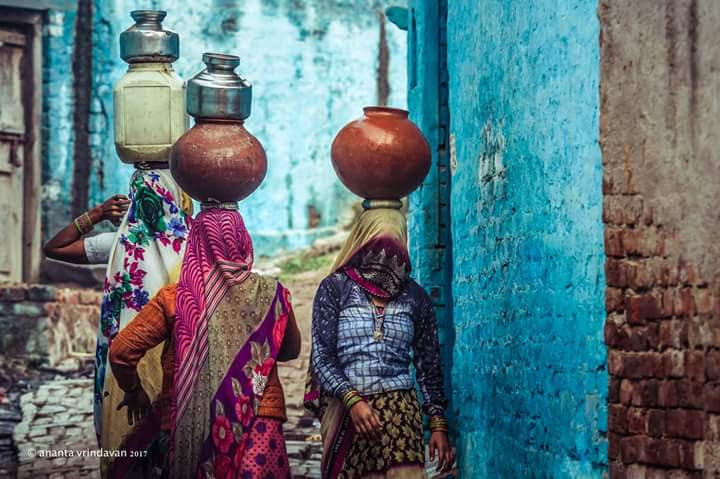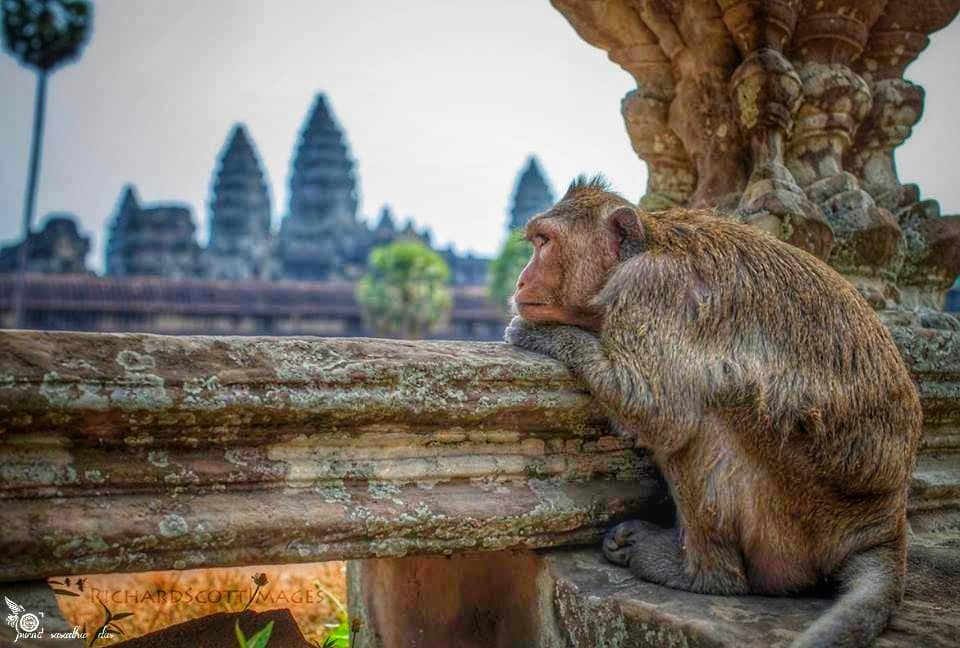Mahanidhi Madan Gopal Das
1977, we left our Delhi train in Mathura, and bounced along the dusty road in a clickety-click, clickety-click horse cart ride to Vrndavana. “Welcome to Vrndavana, the Land of Krishna” said the sign as we approached its precincts.
“Ahh, we made it, we’re here; this is the spiritual world!”
Then Sri Vrndavtavi Mata blessed us with our first darshana of Vrndavana, and completely excited our heart with a special kind of attraction. We felt a unique sense of imperceptible peace, and some inexplicable feeling of continually resonating joy in the core of our heart.
As we wandered about the villages of Vrndavana, Varshana, Nandagrama, Govardhana and Radha-kunda all of our senses, especially our eyes, ears and nose, were captivated and transported to a subtle and mysterious realm far beyond whatever lies outside this “play land of God”, lilabhumi Vrndavana.
Now we will share some of our memories from forty-two years ago.
Legions of robust, brilliant green happy parrots chattered everywhere in the neem trees lining the Chattikara road like rows of sentinels guarding the path from the Delhi Road to the Banke Bihari Mandir. The road was so narrow that if two cars were passing, the car giving way would get scratched by the scrawny, thorny babul trees (acacia arabica) flanking the road.
The twisty, narrow roads of bricks were polished smooth from millions of loving shuffles scurrying to tiny temples or regal palaces housing the sweet Kings of their hearts. In the small “family temples” and grand mandirs, the Thakurajis were all being cooled with large cloth fans pulled by the eager hands of grateful bhaktas.
Before our Vrndavana yatra we had darshan of many Krishna murtis in mandirs in America, Canada and UK. But here in Vrndavana, we experienced the Thakurajis to be very different, extra special, close and friendly, touchable and human like. If you reach out, Thakuraji will hold your hand, whisper something in your ear and move into your heart. Here the Thakurajis are not aloof and distant. They are loving, and like gaumata they want attention and care.
Thakuraji wants to be close and near His devotees. He misses them and hankers to see them in every arati. When you take darshan of Damodar jiu, Govindadeva, Gopinatha, Radha Raman, Radha Vallabh and Shyamsundar you feel that They really like you, and appreciate your standing before them admiring Their sweet and perfectly beautiful divine forms with every drop of devotion you possess.
“O such a land! Such a wondrous experience! And such a love found in nowhere but Vrndavana!”
The Yamuna River, glistening with an undeniably rich dark blue color, immediately reminded us of our beloved Shyamsundar. Yamunaji meandered in a zig-zag way through the magical landscape, not purposely toward a goal, but lazily like a person relishing one’s self in the inner world of contentment. Like the path of Krishna bhakti, Yamunaji moved slowly, carrying the hidden treasure of her personal joy while steadily move toward her goal, the ocean.
One night at 1.30 a.m. while sleeping in our small Raman Reti guesthouse, we were suddenly awakened by some unearthly sound. It was the deep thunderous crying of what seemed to be thousands of domestic cats meowing in unison. What was that curious mystical cry? The sound abated after some time, but then again roared back into prominence at about 4 a.m.
The next morning, our Vrajavasi friend said, “O that is the peacocks in the forests singing for Radha-Krishna’s nightly rasa lila. And at 4, they are calling all the bhaktas to come for Krishna’s darshan in mangal arati!”
In 1992, by Krishna’s power alone, we did dandavat parikrama of Vrndavana. It was all just sandy plains from Keshi Ghat to the big white Jagannatha Mandir. Then believe it or not, the entire length of the parikrama marga was ONLY soothing cool and purifying white Yamuna sand. Parrot and peacock filled big tall neem, palasha, kadamba and arjuna trees interspersed with fruit orchards of ber, guava and jamun trees lined both sides of the marga. Crossing the Vrndavana-Mathura road, the parikrama marga was bordered by big trees and garden filled spacious ashrams of various saints all the way to Raman Reti.
Often we would take visiting devotees to the then tallest building in Vrndavana, the seven storied “Pagal Baba Mandir”. From its roof we would point out the Goswami Saptalaya Mandir domes, and the royal Madan Mohan temple gloriously reigning atop Dvadashaditya Tila.
This is the Vrndavana of forty-two years ago that completely captured the dry and broken heart of one 24-year-old American. Like many, we were searching for a nature loving, personal and playful God. We found Him here; Krishna and Radha in their paradise of pure devotion, Vrndavana! It was an incredible overtaking of our being. Impossible but it’s happening. We can see, smell, hear, taste, touch and feel Krishna right here, NOW in Vrndavana.
Ten years later, in 1987, by Srimati Radharani’s mercy, we happily moved permanently to Vrndavana. Then a tragedy appeared. Unfortunately, for the next 20 years (1987-2007), we painfully and helplessly watched the divine paradise that once enchanted our hearts disappear right before our tear-filled eyes.
Sadly, our hearts broken, it’s now ALL GONE! No more trees, no more parrots, peacocks or mynas, those talented maestros, and NO MORE YAMUNA! Small “family temples” vanished under the rubble of stores and apartments. Other friendly, sweet and vibrant small temples turned into sprawling complexes of marble, gold, tinsel and trim all neatly packaged in steel “monkey cages”. Thakuraji’s “devotee fans” moved by loving hands and hearts were replaced by ceiling fans and AC’s.
During the destruction of Vrndavana, we often thought and prayed, “O Radharani! You are the Queen of the trees, birds and forests of Vrndavana. And You are the one and only supreme Empress of absolutely, pure and immaculate selfless love for Sri Krishna, mahabhava. We promise You that if we ever get some money, we will buy a little land and offer You some beautiful trees as a small token of our love and gratitude for all and everything that you have and still are giving to us.”
After many years, by Srimati Radharani’s sweet will, She gave some land in Her heart’s domain, Sri Radha-kunda Dhama. By Sri Krishna’s grace there are now over thirty-five trees here for Lila Yugal’s enjoyment, including neem, campak, asoka, amla, moulshri and Their favorites, our precious Tamal and Kadamba yugal vrksh.
With great disappointment, however, we have seen that most of the devotees buying land here will mindlessly decimate all the trees, and then cover every inch of their plots with cement, buildings driveways and towering walls, leaving zero vraj raja, save and except a ceremonial “tulsi stambha”. What about serving Vrndavana, and pleasing the Queen who so kindly gave you the land, Vrndavaneshvari Sri Radha?
We met one South Indian sadhu just after he purchased a plot in Vrndavana. “Maharaja, what is your plan for your land? Are you going to cover every inch with cement like everyone else does?”
Swamiji replied, “O, No, no, this is Vraja. I promise you I will build a small ashram along the back wall and leave the remaining area for a garden with trees and flowers for our Thakuraji.”
“Yes, this is good. Actually, it’s a privilege and a special favor from Srimati Radharani to be granted some land in Her Queendom. “Your property” and all the land in Vrndavana actually belongs to Sri Radha alone. We are merely guardians meant to protect and beautify it with flowers and trees as a place for the happiness and sweet pastimes of Sri Sri Radha Govinda Yugal.”
Conversation over, construction starts and guess what happened? A big ashram manifested eating all the land, and the “promised garden” is nonexistent! Such is the age of Kali!
To all those blessed devotees moving to Vrndavana and building a home on a private plot, we humbly make the following appeal. No matter how big or small your plot is, please only build on one-third or one-half of “your land”, and leave the rest for a “Radharani Bagicha”, a beautiful garden full of fragrant flowers and happy trees! The is real residence in Vrndavana, Vrajavasa, and this is Krishna bhakti.
In closing, we pray: “O Vraja! O Vrndatavi Mata! How very much we miss you that while writing this our tears are falling on the paper. Will we ever see you again? Will we ever be embraced by you again, and fill with that special feeling of love, security, hope and happiness than only a bhakta can perceive? O Srimati Radharani! If Vraja does not return, then please I beg You to take me to Your lotus feet in Goloka Vrndavana Dhama.
Jai Jai Sri Radhe! Sridham Vrndavana ki jai!

